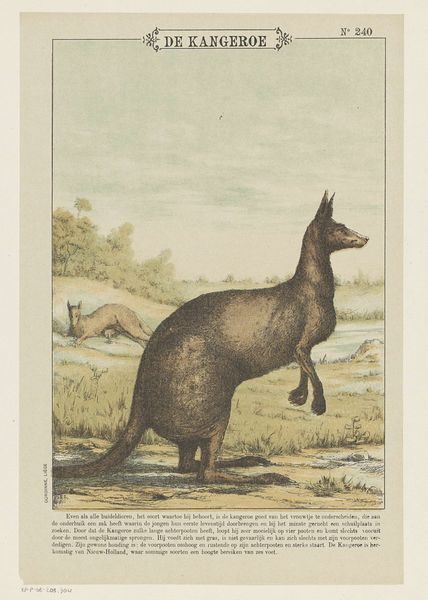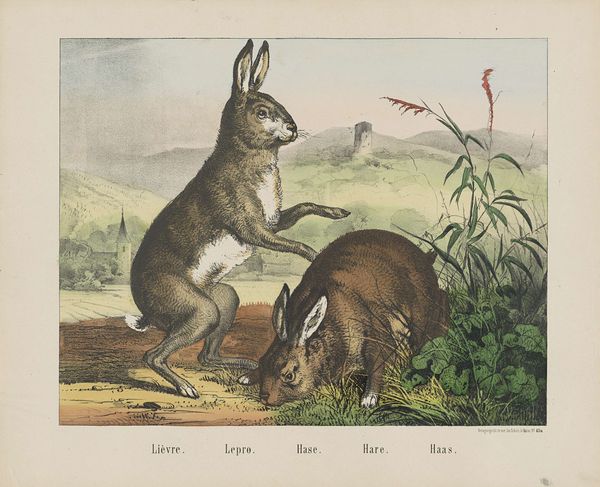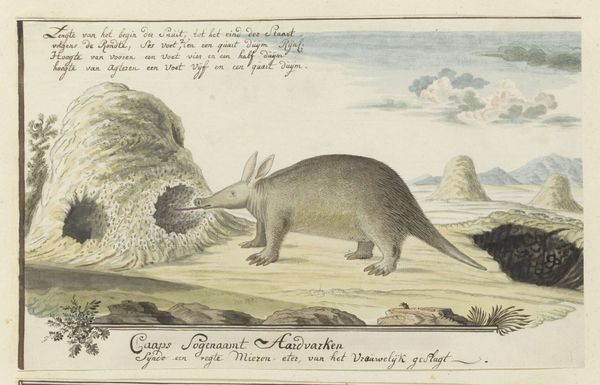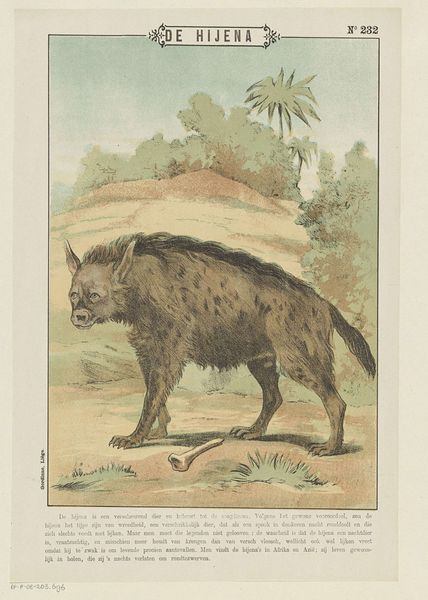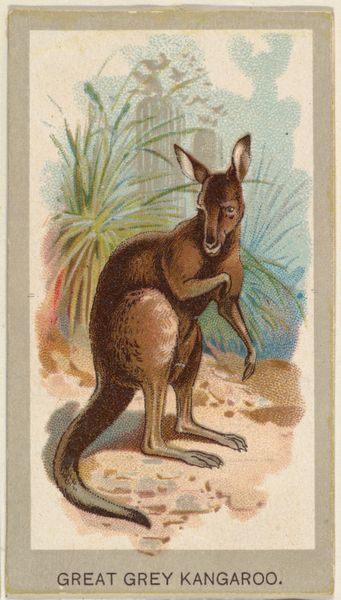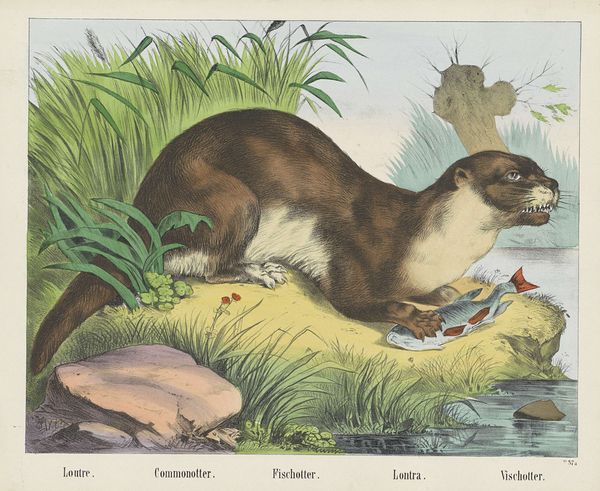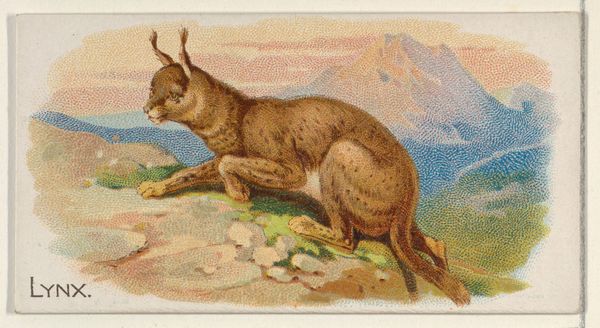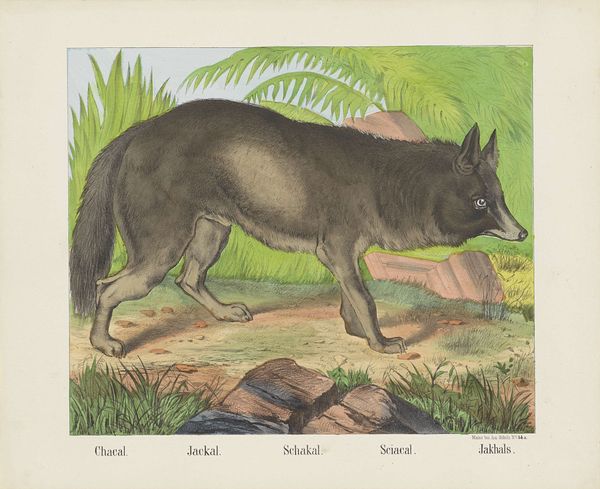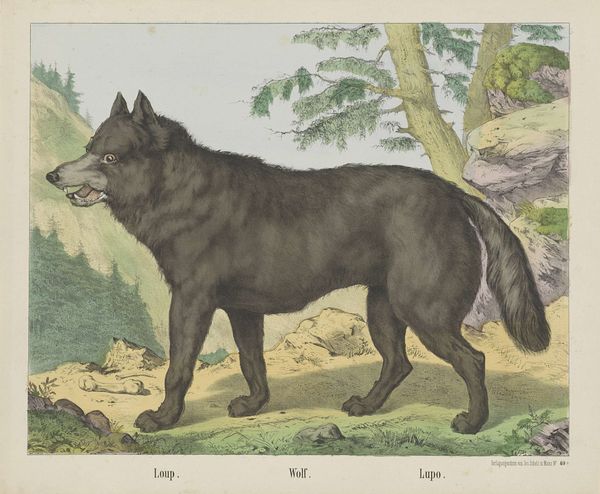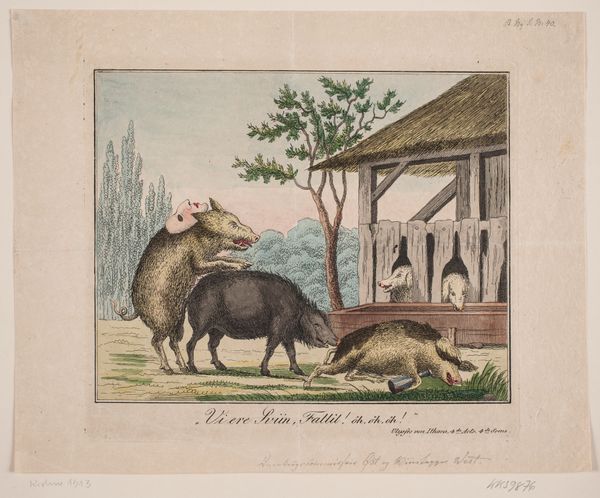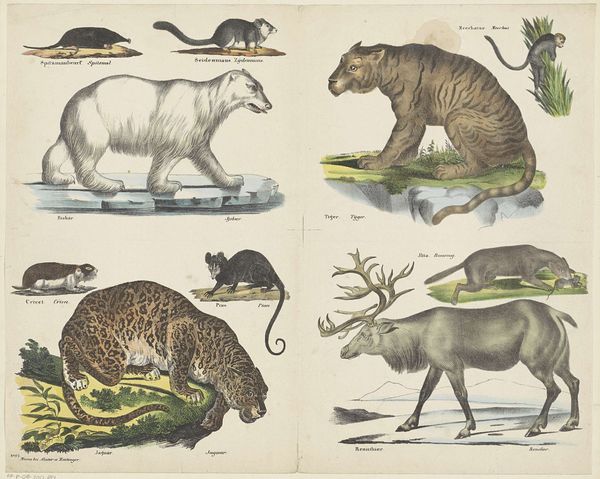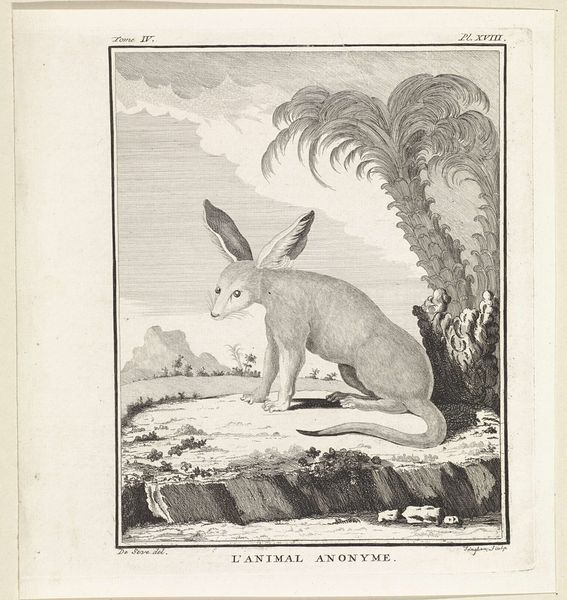
painting, watercolor
#
animal
#
painting
#
landscape
#
watercolor
#
watercolour illustration
#
watercolor
#
realism
Dimensions: height 350 mm, width 429 mm
Copyright: Rijks Museum: Open Domain
Editor: Here we have "Kanguroo," a watercolor by firma Joseph Scholz, created sometime between 1829 and 1880. The subdued colors give it a quiet feel, almost like looking at an old textbook illustration. What’s your take on it? Curator: It’s fascinating to consider this image within the context of 19th-century scientific illustration. Think about the paper itself: its manufacture, its availability. The watercolor medium speaks to a process of careful observation and recording, laboriously reproduced for dissemination. It's less about "high art" and more about knowledge production, isn’t it? Editor: That’s interesting. So you’re saying it's less about artistic expression and more about… documenting? Curator: Precisely! The firm of Joseph Scholz likely produced these for mass consumption. Consider the colonial context: the exotic “other” being catalogued and commodified for a European audience. The labor involved – the draftsmen, the printers – is all part of the material story the image tells. Do you see how the method of creating an image reinforces existing power structures? Editor: Yes, that makes sense. It’s like the materials and techniques are integral to the social message itself. Curator: Exactly. The act of painting in watercolor was tied to ideas of leisure and education, but also scientific authority. It presents kangaroos within the sphere of European understanding. We need to also think about who the end consumers were. The cultural norms that shape the image, were embedded into every layer, from the paper's raw materials to distribution. Editor: I’ve never thought about scientific illustrations that way. I guess focusing on the medium and production opens up a whole new way to understand it. Curator: It reveals the material underpinnings of knowledge itself!
Comments
No comments
Be the first to comment and join the conversation on the ultimate creative platform.
